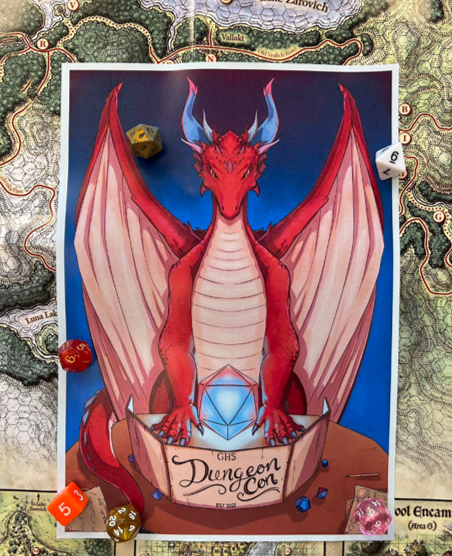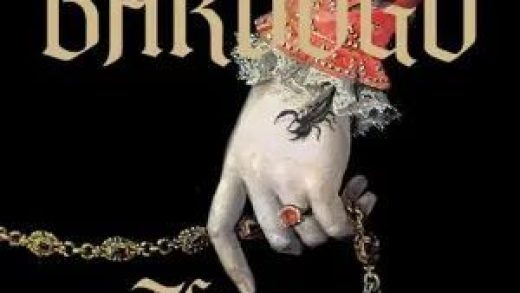It’s Saturday night. You’ve got your dice, your Dungeon Master’s (DM’s) screen, and you’ve got all the books, including a blank notebook. You’ve been waiting for this moment for ages. It’s time to start plotting out your first Dungeons and Dragons campaign, but how to start a D&D campaign? You are probably more than a little nervous, with questions swirling around your head: What if I mess up? What if everyone gets bored with my ideas? What if I forget something crucial?
Listen, it’s going to be okay. How do I know? Because of three very simple yet important rules to live by:
You are not the players’ enemy.
Having fun ALWAYS beats following the rule book.
Don’t plan too much.
I write a lot about Dungeons and Dragons and how I use it in the school library that I manage here in London, UK. I’ve had the pleasure of running several Dungeons and Dragons campaigns with both students and adults alike in the past five to six years. I’ve even written a book on this very topic! One thing that I am relatively new to but absolutely love is creating side quests and DnD campaign ideas from scratch and unleashing this on the players that come to the table. Creating your own maps, worlds, non-player characters, traps, dungeons, and threads is, in my opinion, pure joy that is hard to come by in the traditional board game sense.
On the flip side, this can be a daunting and even intimidating task, but as a Dungeon Master, I’m here to tell you that you don’t really need to worry. As long as you inject a lot of enthusiasm, be honest with your players if you need to backtrack, and make the game as laid back and enjoyable as possible, your players will love being in the world that you have created, trust me.
Below, I’m going to discuss DnD campaign ideas and side quest ideas, hilarious scenarios, and more.
Start With a Bang
In my experience, great D&D campaign ideas can stem from an early combat scenario. There are a few reasons for this: most players enjoy combat. Sure, some players like role-playing and exploration over combat, so if you mix in a little of both at the start of your campaign, it will bring both aspects of the game to the forefront. It’s very important that you know your players as a DM (even before your campaign starts). You do not want to create a campaign filled with tons of combat, not knowing that your players enjoy conversation, role-playing, and mystery. I love the idea of players starting in a town, city, or in an inn, and they are thrust straight into combat — they get caught up in a brawl, maybe a creature wanders into town, and they have to save the day, or a strange magical phenomenon creates a situation where they are forced to fight someone.
Keeping in mind they are most likely level one and very easily killed, it’s important to keep the fighting quick and with NPC (Non-Player Character) assistance. Starting with combat allows your players to get a grasp of how their characters work, try out spells and weapons and cool actions. It’s a way for you as DM to get them to introduce themselves to the campaign in a way that is fun and exciting. Maybe the initial combat scenario is how they meet as players, or if they are travelling together, maybe they learn something new about their fellow comrades in this stressful moment.
Early combat is also a way for you, as the DM, to plant a secret or clue into the game that links it to your overarching plot. Do they get ambushed by goblins heading into town? Maybe one of the goblins has an unidentifiable artifact on them that leads them to the town’s alchemist, who tells them she saw something similar in a nearby cave. What or who is in the cave is up to you! But it doesn’t have to be straight-up combat with no follow-up. Maybe the cave leads to a secret cult’s lair who are planning on taking over the town. It’s important to know that every encounter the players have does not have to be related to your main plot, but in my experience, putting combat up front and centre at the start and having a tiny breadcrumb related to the main plot can be fun and exciting for everyone.
A quick example:
Players start in an inn; the inn gets attacked by a troll. A troll is probably too dangerous for Level One players; however, with the help of the bartender and some semi-retired NPC adventurers, the players are able to kill the creature. To thank them, the barkeep gives them a free meal and a place to stay for the night. When disposing of the troll’s body, the players see a strange tattoo behind its ear. That’s funny; the same symbol was seen scratched onto the door of the tavern when they came in…
The Ticking Clock
Whether you start with combat or not, one of the best hooks that motivates players, in my opinion, is a ticking clock scenario. The first ever D&D campaign that I ran was called Tomb of Annihilation. I absolutely loved it, even though I was really green and had no idea what I was doing. Without spoiling anything, the simple idea behind that campaign is that there is a curse on the land, and it’s getting worse — the players must put an end to the curse before it destroys everything. What follows (if you decide to run this amazing campaign) is one of the most harrowing, blood-curdling adventures ever written, in my opinion.
No matter if you write your own campaign or follow a pre-written adventure, having a sense of urgency to keep the players interested and engaged is key. If you do this, have little reminders sprinkled throughout that help players if they get off track (and they will get off track; all great D&D campaigns go off the rails!). They can have these gentle nudges to tell them what has happened “off-screen” while they were starting their own casino in a town of 75 people (like my players did!).
The Flashback
I’ve used the flashback for both a side quest and as part of our main Dungeons and Dragons campaign. For me, the flashback is very useful when one or more players cannot make the game that day. I have used it to allow characters to have a session devoted to how they met or to flesh out their backstories. For example, we have a rogue in our party who was once a pirate; I used a flashback to establish how she and the Tabaxi monk met in a dingy seaside tavern when they were both down on their luck. It was a lot of fun, and now it is part of their history together!
|
|
Cursed Bookshop
One of our players is a bookseller in real life, so I made a side quest set in a bookshop where the books were cursed. Anyone who bought and read a book from the shop was placed under the control of a corrupted wizard. The town was under siege, and the players needed to work out who was behind it all — the owner of the shop, an employee, a disgruntled customer, who? There were some really fun moments. Some of the treasures you could reward the players with in this adventure are spell scrolls from the shop, a book that grants a bonus to Intelligence or Wisdom, or a map that allows the player to cast the powerful Scrying spell once or twice.
Aging
I love this one because it generated a ton of (fun) anxiety on the part of the players. It can be inserted in any way, really. I had the players come across a corpse, and as predicted, one of the players poked the corpse with their weapon and looted it, only to discover that they had to make a Wisdom Saving Throw as the corpse came to life and tried to scare the life out of the player. They failed the save and had to age 20 years on the spot.
Not only that, but every 12 hours, they got older. How old? I roll a d8 (an eight-sided dice) to determine how many years. This made them realise they needed to act fast. They discovered the cure was found in a rare flower that sent them on a desperate trek into the mountains to find it. It ended up being a three- or four-session quest and one that is still brought up frequently!
 |
Magic Beans
If you are a Dungeon Master, I cannot stress enough how fun magic beans are. You can give them one bean or as many as you like, but beware, the results of planting the beans can be completely life-changing for your characters! How do the beans work? Simple, the characters plant one in soil, then water them, and one minute later hilarity ensues as they (or you as a DM) roll a d100 and consult the magic bean table.
Here’s an example of what can happen: Our players were investigating a shipwreck that was frozen in ice. Unknownst to them, three hags were living in the shipwreck and were plotting the players’ demise. As they were investigating, one player planted a bean “for fun” and rolled a 99, meaning that a full-size pyramid with a mummy lord inside erupted from the bean. On top of the shipwreck. On top of ice. Needless to say, it was a wild, wild encounter that created offshoots and more side quests.
Murder Mystery
Murder mysteries are a lot of fun, in my opinion, and can be great side quests or parts of a larger campaign. I really recommend Murder at the Old Wolf Inn, which takes place entirely in one tavern and has a great cast of characters. It’s a good idea to get a gauge of the players’ interest as some players might not enjoy a Dungeons and Dragons whodunnit, but if done correctly, they are a huge blast in my experience!
If you are looking for D&D side quest or campaign ideas, I cannot stress how helpful DMs Guild is, which can be found here.
Another amazing resource is Sly Flourish. His website is an absolute goldmine for Dungeon Masters just starting out.
And, I’d honestly recommend the Dungeons and Dragons Reddit community, as they have been a lot of help to bounce ideas off of. It’s probably the first place I go to.
I hope your Dungeons and Dragons side quests and adventures all go really well and that you have a lot of fun putting them together!















